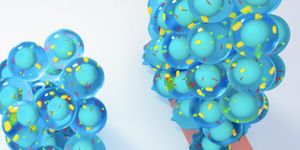Can This Be the Real Discovery of Sterile Neutrinos?
It has been a few nerve-wracking years for particle physicists since the discovery of the Higgs boson in 2012 because the search for more novel elementary particles has turned out to be fruitless. At the world-famous physics institute CERN, despite the massive efforts devoted to upgrade and improve the performance of Large Hadron Collider in the last two years, no blockbuster findings were announced.
Meanwhile, on the other side of the Atlantic ocean, a team of physicists working at Fermilab's MiniBooNE (BooNE as Booster Neutrino Experiment) neutrino detector has just declared that they just made an incredible detection in June. Their data suggest a breakthrough discovery of the sterile neutrino, a hypothetic particle that is never a part of the standard model of physics.
Neutrinos are often considered as the "ghost" particles due to their unreadiness to interact with normal matter. They have a mass only one in half million of that of electrons and no electrical charge. That's why even though they are one of the most abundant particles in our universe, scientists have quite a hard time detecting them.
The "sterile" neutrinos take the elusiveness of the neutrinos to another level. In theory, they belong to a new "flavor" of neutrinos. In the standard model of physics, "flavor" refers to the species of an elementary particle. This flavor of neutrinos interacts only via gravity, unlike their cousins "active" neutrinos who become charged under the weak interaction.
It's worth knowing that this is not the first time scientists stumble upon hints of sterile neutrinos. In the 1990s, another experiment at Los Alamos, New Mexico detected an excess of neutrinos through particle bombardment. Some claimed was the first yet indirect proof of the existence of sterile neutrinos, because neutrinos were predicted capable of changing their flavor. Physicists at the MiniBooNE detector were hoping to replicate the earlier experiment and find similar results.
How did they do it? The researchers fired neutrino beams consisting primarily of muon neutrinos at a detector filled with 800 tons of mineral oil and lined with 1,280 photomultiplier tubes. What's with the lavish setup? The evidence of interaction between antineutrinos and electron neutrinos only appears as faint light flashes, which were recorded 2,437 times, 460 more than the researchers expected.
To cool the hype, some suggest this could merely be the result of a miscalculation. According to another study at the IceCube neutrino detector at the South Pole in 2016, no signature signal that matches sterile neutrinos was found among 100,000 neutrino events that were observed over a decade.
The potentially history-making paper was made public on the pre-print platform arXiv.
Source: PBS Space Time via Youtube








